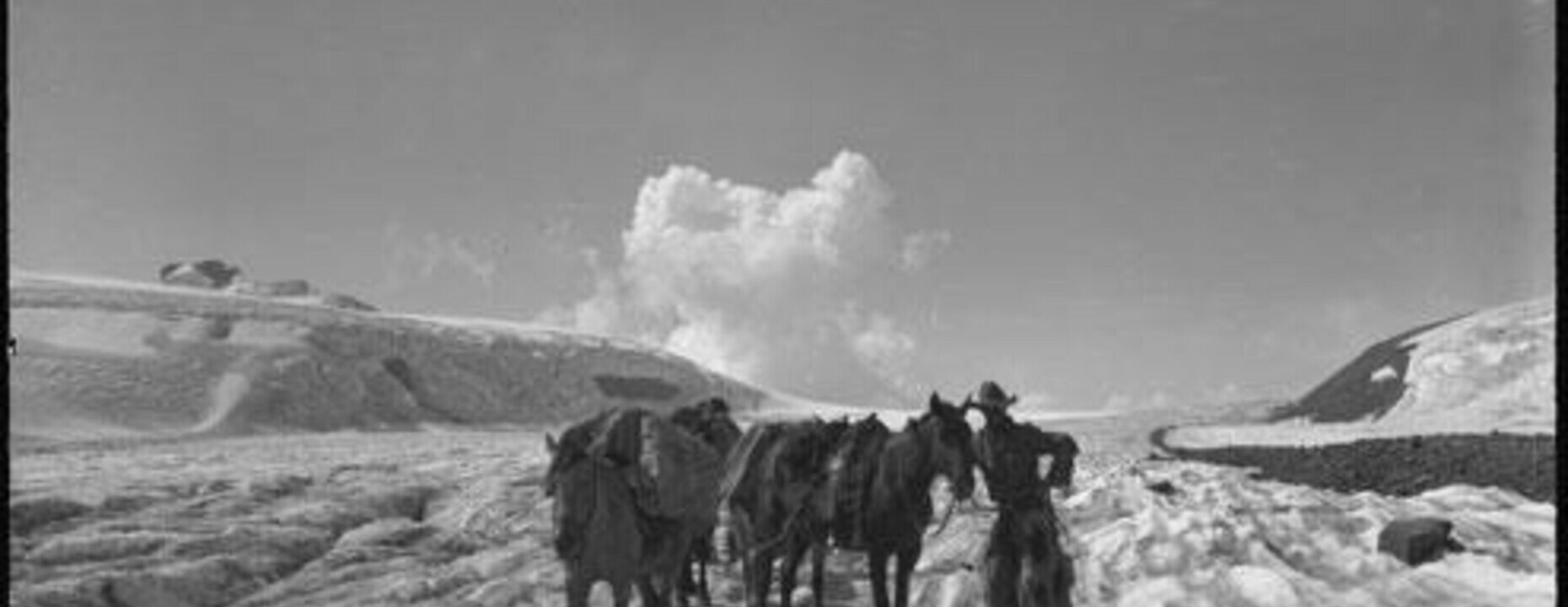In 1924, Alberta artist Byron Harmon organized an expedition to take the first significant photographs and film-footage of a newly chartered territory: the Columbia Icefield. For Harmon, who had spent 20 years based in Banff, it was to be the crowning achievement of his career as a photographer. The mission was given added weight by the recent discovery that the massive Columbia Icefield fed rivers and streams that poured into three different oceans: the Arctic, the Pacific and the Atlantic. The very first horse-pack to traverse the 240 square kilometer icefield had done so the previous year. Harmon was determined to be the second, with the added challenge of carrying a 35 mm motion-picture camera and four still cameras, as well as the attendant film. To communicate with the outside world, the expedition also transported a radio set and a cage of carrier pigeons. Harmon gathered a team of three experienced mountain men, who were warned of the extra delays and hurdles the artistic itinerary would impose. He also invited Lewis Freeman, a well-known American journalist, writer and adventurer, who reported on the expedition. Led by a guide named Soapy Smith, it took sixteen horses to carry the crew and their gear on the ten-week trek.
This exhibition will follow their route through the photographs, film, lantern and stereo-slides that were produced as a result. It will trace the trip from the outset in Lake Louise, up to Bow Lake, parallel to the Great Divide, through Castleguard Valley to the Columbia Icefield, over to the head of the Athabasca River and ending at Maligne Lake – before returning to Banff through the snow.

